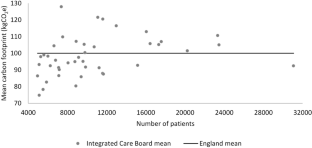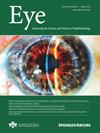英格兰白内障手术路径的碳足迹:一项使用行政数据的观察性研究
IF 2.8
3区 医学
Q1 OPHTHALMOLOGY
引用次数: 0
摘要
背景英国国家医疗服务体系(NHS)设定了到 2045 年实现碳净零排放的目标。本研究旨在调查白内障手术 "第一次就做对"(GIRFT)高容量低复杂性(HVLC)路径的碳足迹与现行做法之间的估计差异。结果英格兰的平均碳足迹为 100.0 kgCO2e(根据综合护理委员会的不同,范围在 74.8 kgCO2e - 128.0 kgCO2e 之间)。如果所有综合医疗委员会都采用 GIRFT HVLC 途径,那么 2021-22 年将可节省 17.5 千吨 CO2e。结论即使是在白内障手术这样的标准化医疗途径中,即使是在政府资助的国家医疗系统中,也存在着显著的实践差异。本文表明,解决这种不必要的差异并尽可能地遵循 GIRFT HVLC 路径有可能减少白内障手术的碳足迹。本文章由计算机程序翻译,如有差异,请以英文原文为准。


The carbon footprint of cataract surgery pathways in England: an observational study using administrative data
The National Health Service (NHS) in England has set a target to be net zero for carbon emissions by 2045. The aim of this study was to investigate the estimated difference between the carbon footprint of the Getting It Right First Time (GIRFT) High Volume Low Complexity (HVLC) pathway for cataract surgery and current practice. Retrospective analysis of administrative data. Data were extracted from the Hospital Episode Statistics database for all elective cataract surgery procedures conducted in England from 1st April 2021 to 31st March 2022. The England average carbon footprint was 100.0 kgCO2e (ranging from 74.8 kgCO2e – 128.0 kgCO2e depending on Integrated Care Board). Had all Integrated Care Boards adhered to the GIRFT HVLC pathway, then 17.5 kilotonsCO2e would have been saved in 2021–22. The main limitation of our study is that only key elements of the cataract surgery pathway were included in the analysis. Even in a standardised healthcare pathway such as cataract surgery and within a publicly funded national healthcare system, significant differences in practice exist. With this paper we have demonstrated that tackling this unwarranted variation and adhering to the GIRFT HVLC pathway where possible has the potential to reduce the carbon footprint of cataract surgery.
求助全文
通过发布文献求助,成功后即可免费获取论文全文。
去求助
来源期刊

Eye
医学-眼科学
CiteScore
6.40
自引率
5.10%
发文量
481
审稿时长
3-6 weeks
期刊介绍:
Eye seeks to provide the international practising ophthalmologist with high quality articles, of academic rigour, on the latest global clinical and laboratory based research. Its core aim is to advance the science and practice of ophthalmology with the latest clinical- and scientific-based research. Whilst principally aimed at the practising clinician, the journal contains material of interest to a wider readership including optometrists, orthoptists, other health care professionals and research workers in all aspects of the field of visual science worldwide. Eye is the official journal of The Royal College of Ophthalmologists.
Eye encourages the submission of original articles covering all aspects of ophthalmology including: external eye disease; oculo-plastic surgery; orbital and lacrimal disease; ocular surface and corneal disorders; paediatric ophthalmology and strabismus; glaucoma; medical and surgical retina; neuro-ophthalmology; cataract and refractive surgery; ocular oncology; ophthalmic pathology; ophthalmic genetics.
 求助内容:
求助内容: 应助结果提醒方式:
应助结果提醒方式:


